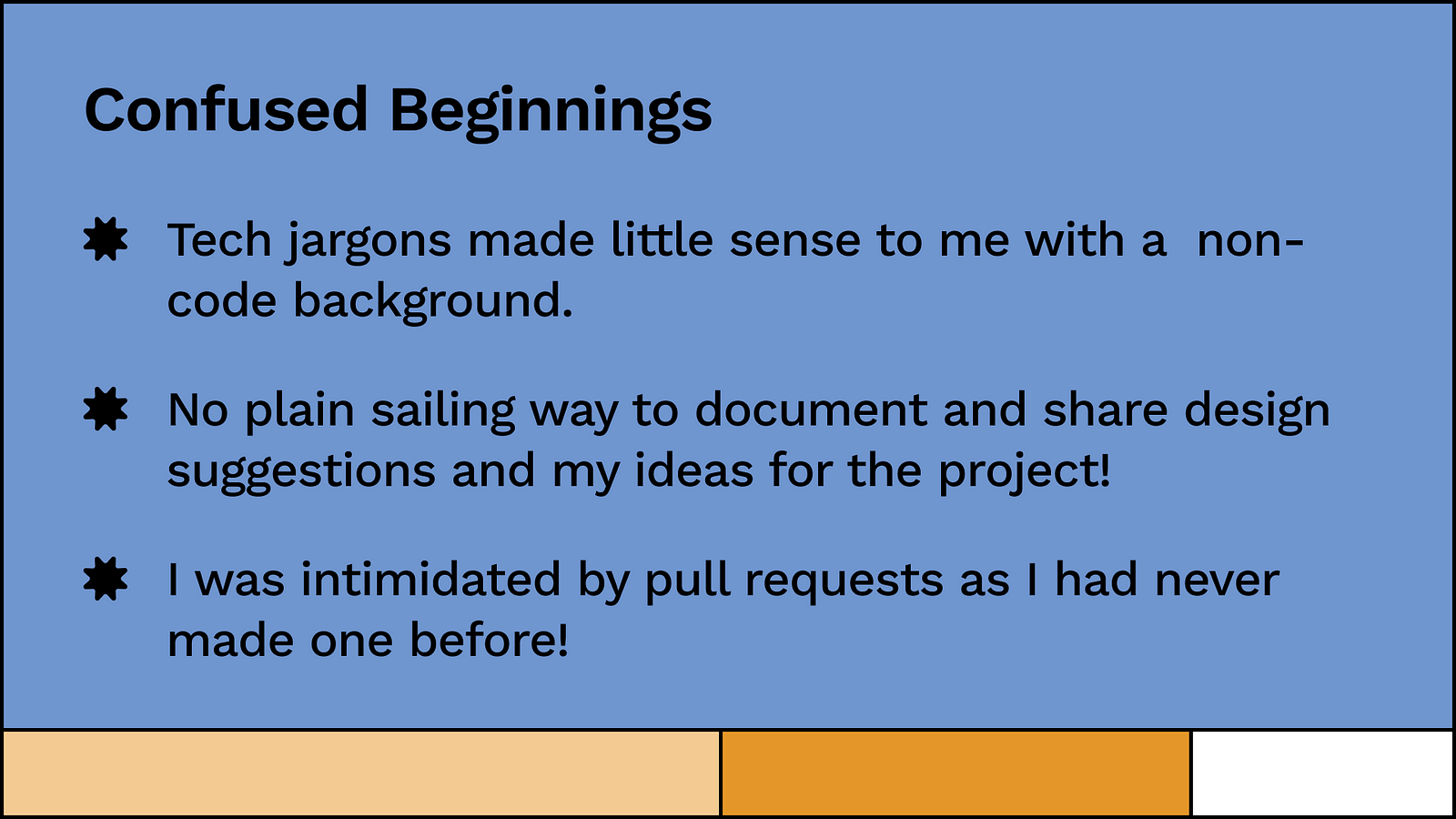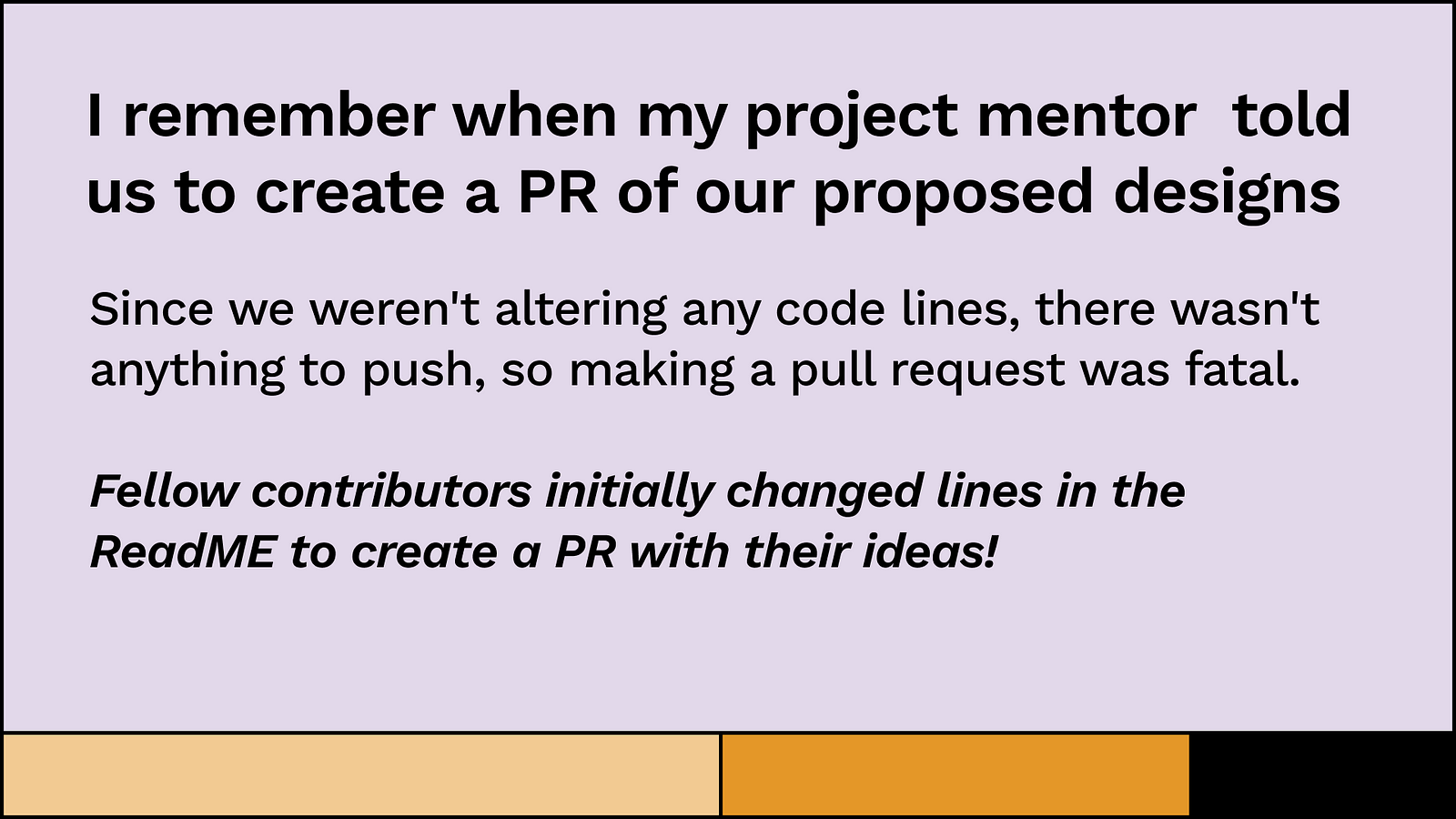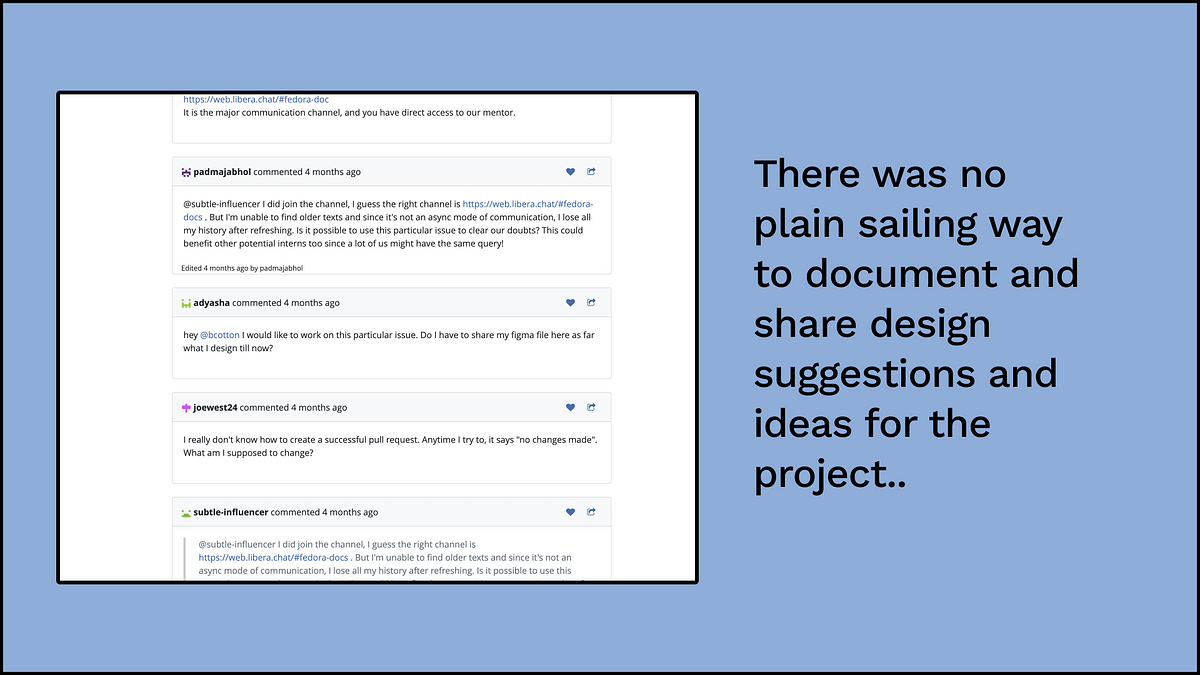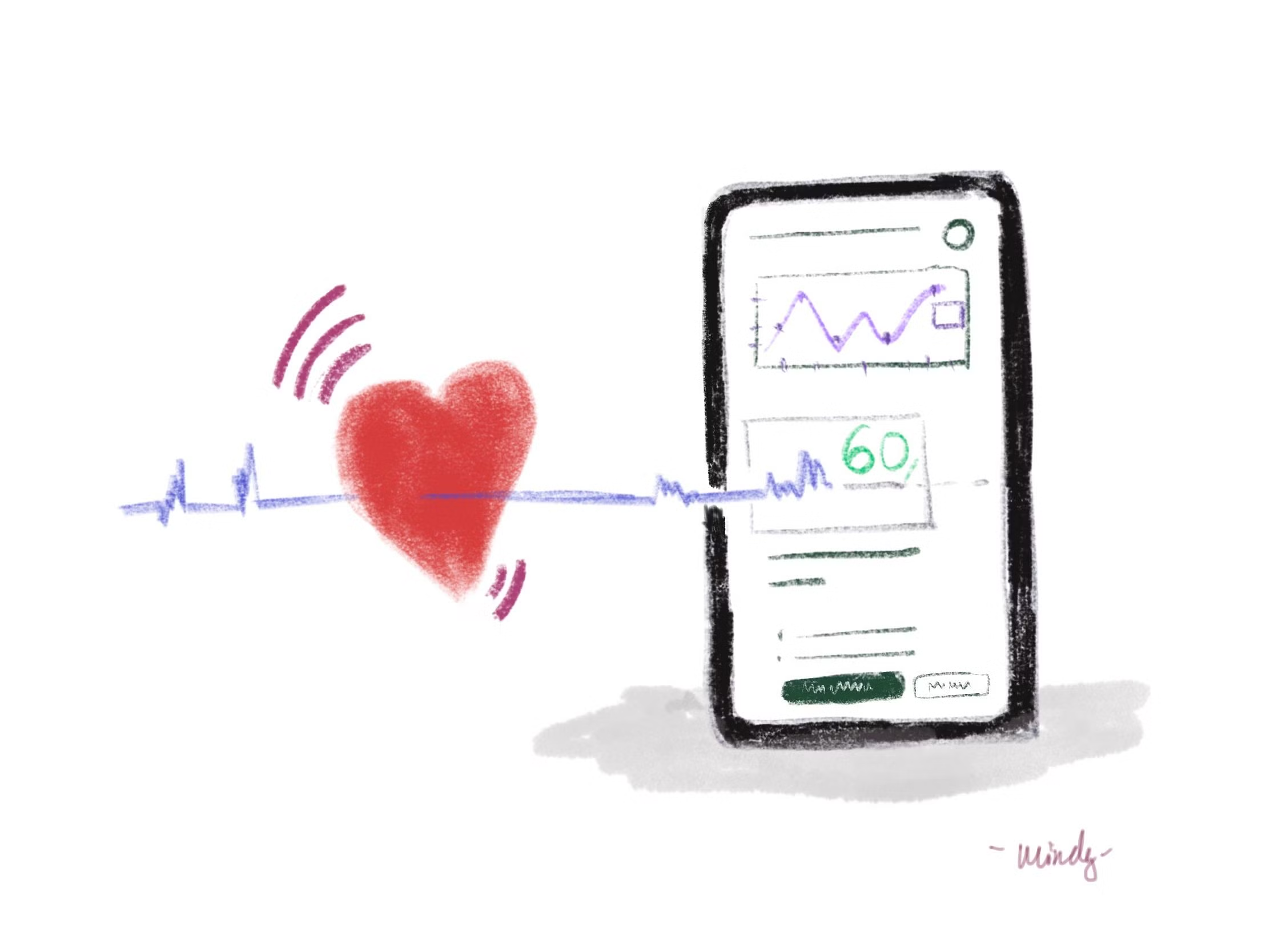I'm Anushka, a past Outreachy intern with Fedora who worked on improving the Fedora Docs experience. This internship was unique because of a user experience design project amongst the countless programming projects in open-source space.
When one of our Outreachy blog prompts was "everybody struggles", I decided to pen down my struggles with being a designer here. But, well, I struggled to complete it on time.
PS: Adobe acquired Figma while I was writing this article, procrastination much? :’)

People who know me know that this was my second attempt at Outreachy. I got through the initial phase last year but couldn't find any project where I felt I would be a good fit with my experience in UX design.
So I gave up the dream of being an open-source design contributor. This year luckily, I found a project where I could finally put my skillset to use.
Bare beginnings: Why Open Source?
For the longest time, I've watched peers at college get into Google Summer of Code (GSoC) and code their summers away. I had never heard of designers pursuing a career in open source and felt that design didn't belong here.
Still, curiosity led me to learn about Outreachy, which also provides internships in open-source user experience design!

But, It wasn't a smooth ride being a designer in a developer-first environment. I was new to everything from Linux to Git and GitHub to IRC, Element, and even what different open-source communities do!
![banner ad for Letter]() Ad
AdLetter
An AI-assisted newsletter builder for content creators, designers, and developers.This article is supported by Letter.
As a designer, it is intimidating to begin contributing in open-source.
But, I ALSO feel designers have the power to shift OSS from being developer-friendly to a user-friendly environment; the community just need a little push.
Graphic Design is where OSS ends for designers today…
When I got involved with some open-source communities last year and asked about their design teams, all I could gather from their documentation mostly revolved around graphic design, which is neither my forte nor the field I want to pursue.
Eventually, my wish to contribute faded out because I couldn't find the correct role for me in this open-source world.

Fedora Docs, and here we go again.
I applied to Outreachy again on a whim this year without expecting much! Luckily I found the Fedora Docs project on the first scan, and I started understanding the nitty-gritty of the project.
I don’t want to go into the details of the contribution period, as many past interns have already described it in the best way possible, and all the information is readily available on Outreachy’s website. (just freely google it)

Another issue was that Fedora Pagure doesn't support linking images in the PR. And it's difficult to explain the design process and decisions without relevant images, to make a case. Nobody can imagine the screens in their head!
I made a Figjam presentation with all my ideas, design decisions etc., laid out in a week-wise format. But converting everything from this presentation to text was quite cumbersome.


Developers can rely on the system for version control and documentation (on GitHub or the like). As a designer, I had to input the entire change log manually.
When I brought this up with my mentor, he finally agreed we could attach a link to the design file where we made all the mocks instead of opening a PR. But, we either had to attach them in the discussion forum and IRC chats, and there is no record, as in the case of developers having their entire work embedded in a pull request.


Designing needs a lot of brainstorming. Ideas are built upon ideas. It couldn’t be measured in 0s and 1s, as success isn’t determined by if a pull request was closed or merged.
It is judged through the thought process behind each decision, making design inherently collaborative. Even in this remote-first world, I feel brainstorming and collaboration are tricky while contributing to OSS, where you're already trying to understand many new concepts.

Sometimes, while working on the issue assigned to us during the contribution period, I feared other contributors could pick up and build on the ideas I shared. I know it's not the spirit of design to work exclusively, but that's how Outreachy applications are judged.
Even for the sake of competition, I didn't enjoy that we couldn't discuss ideas brought forward by my fellow applicants together!
Tools of the Trade
One of the regions where I also struggled was using Open Source Design tools. There isn't a wide variety of open-source tools for designers to choose from.
For better or worse, we care about the design tool we use. We choose jobs based on what tool we'd spend our time in or passionately try to convince the team to make a switch.
~ The Battle of Design tools, Charli Marie
I've been designing in Figma ever since I started! I had also used Adobe Suite to create graphic art in the past, but I had never used or come across a discussion about open-source design tools.

Fedora introduced me to Penpot, the first Open Source design and prototyping platform for cross-domain teams.
Coming here from a working experience in Figma, I didn't want to change what worked well for me.

Even if I wanted to try this new tool, I could not export my Figma Files into Penpot, and there were a lot of iterations on my Figma File, replicating, which would have been a cumbersome and unproductive task for me.
With Figma's acquisition, Penpot recently surfaced in the news again. The creators have received series A funding, and a lot of things are upcoming, including the ability to import files from Figma! ( yay:)))
Still, access to open-source is primarily limited by flexibility in using tools it provides to people, another reason why many impactful contributions are left tangled amongst tech constraints.
Quoting a friend who used to contribute to OSS as a Graphic designer, “Partly I stopped contributing was the same reason. I just did not like the tools.”

A Designer's definition of Open Source
Why are designers relatively rare contributors to open source?
~Difficulties of design in open souce, Open Source design
Designers have a different definition of open source than developers. Designers also want to work to benefit all in the tech community and help fellow designers grow.
But Open Source design is not a thing yet.
~ Designing with the Community — Miguel Solorio, Microsoft (Config)
Proprietary companies like Google and Cred have released open-source design kits and are advocates of the open-design movement. The question is, how do we bring contributors and resources under one umbrella?
What’s stopping product designers from contributing to open source projects?😳
— Anushka Jain (@likeanushkaa) August 6, 2022
Open Source communities might think, Why should we care about design or usability? Isn't everything working?
I realised during my Outreachy internship that the Fedora Docs website redesign I was to work on wasn't merely a landing page revamp. The website has grown organically over so many years that no one has cared about irrelevant stuff retained on the website for a long, long time.

I found as many as 13 Installation and Configuration Guides on the Fedora Docs website. And to think, most people wouldn't even want to read one!
This need for extensive help in the installation, configuration, and routine maintenance of system functions continues to make the work of data processing highly meaningful. But, still no one is speaking for the poor user.
~ A Software Design Manifesto, Mitchell Kapor

Designers are not close to Open Source culture, as they are being trained for the corporate world first.
Food for thought: How can open source reward contributions in design?
UX design is a mutually collaborative process where everybody feels related to any idea or implementation. Unlike merging pull requests, it is very hard for designers to get attribution for their work today.
Looking Forward…
There is a huge opportunity waiting for us to make an impact by building designer-friendly OSS tools that are accessible and inclusive, and who knows, we might witness a change in this narrative!
GitHub has revolutionised software development for millions of people. Now, the world needs a shift in design as well, from a single-player designer to multiplayer collaborators.
With the advent of no-code tools, in the coming decade open source would look less like code and more like software design!
~ Design is the Future of Open Source — Soleio (Figma Config, 2020)
This time, I settled on adding relevant screens to Fedora's Penpot workspace after brainstorming and editing my Figma File. This small compromise ensures design files are accessible to everyone. But I want to see more design contributors coming forward and making some efforts for a brighter tomorrow.
I want every reader to think about what we can learn from the open source movement of the yester-decade and how design can transition from the hands of a few to that of many.
The Future of Design is Open Source!
~ Graeme Fulton
The Fedora community is ever-understanding, and my mentor put his best foot forward to make me feel most comfortable. The encouragement I received from everyone was humbling, and I am grateful for the unique opportunity.
I also gave my first conference talk at Nest, Fedora 2022, where I spoke about these experiences. It'll be published on the Fedora Project Youtube Channel soon.
Thanks for reading:)
This blog was originally posted on Medium.














